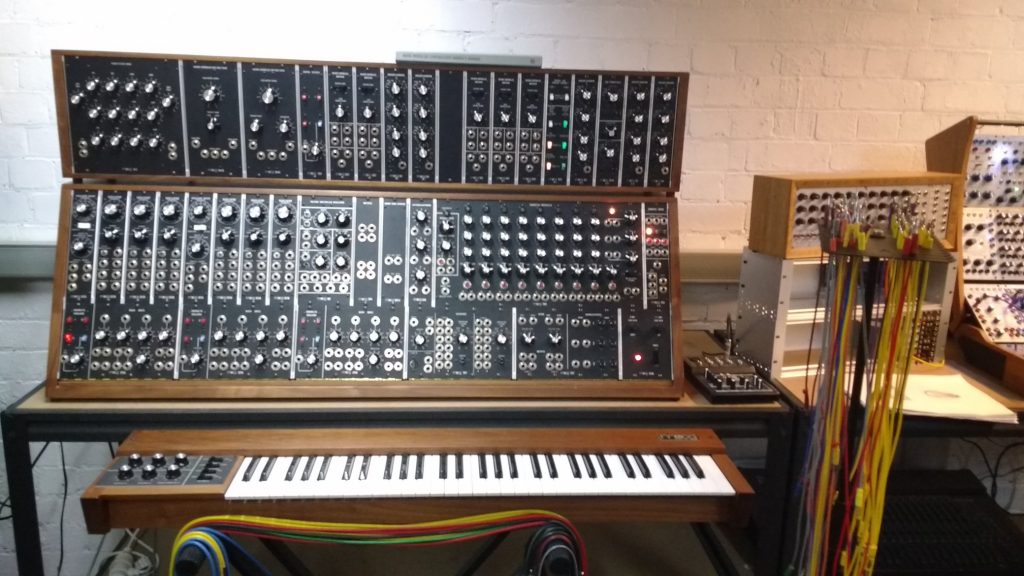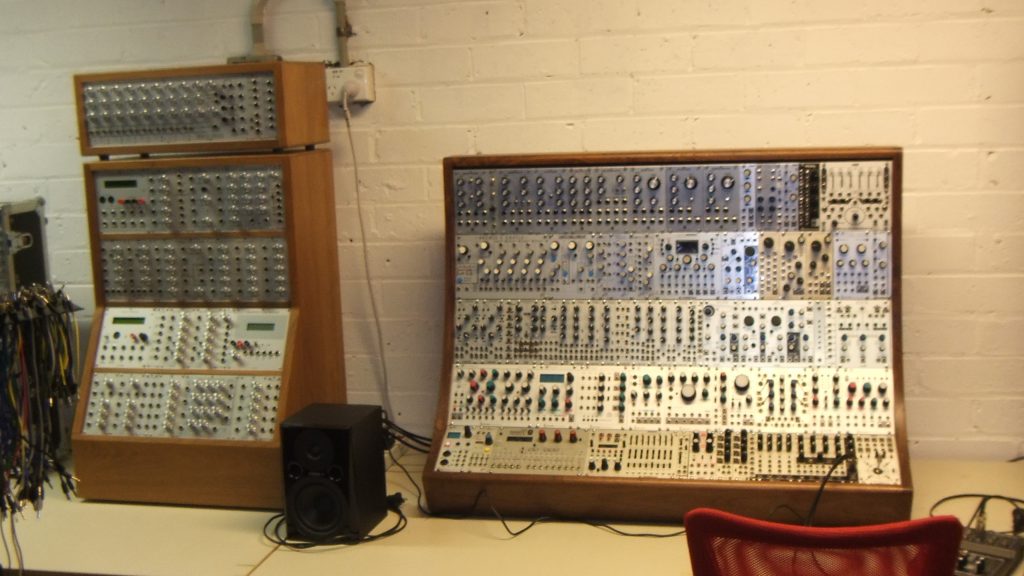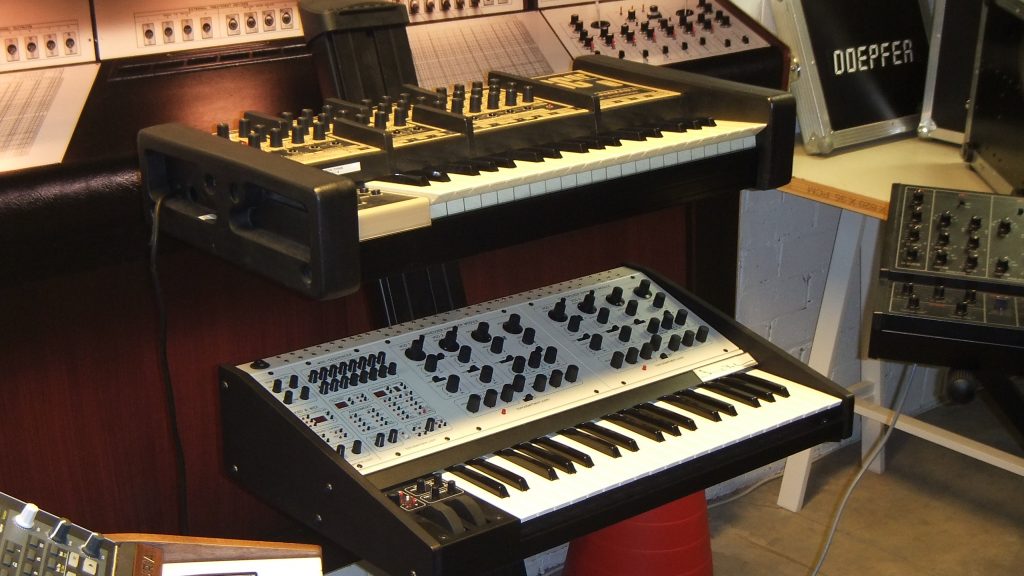On a cold and damp Melbourne winter evening 13 brave souls gathered at the Melbourne Electronic Sound Studio in North Melbourne to learn more about MESS, and its unique collection of (primarily) analogue synthesisers.
Our host for the night was one of the founders, Byron Scullin.
After introducing himself, and giving a potted history of his career and experiences to date, Byron took us through the role of MESS as a not-for-profit organization founded by Robin Fox and himself. He described it as charity devoted to the housing of a collection of functional classic electronic instruments for musicians to experience creating analog synth music in a workshop environment using hardware, as opposed to today’s software recreations.
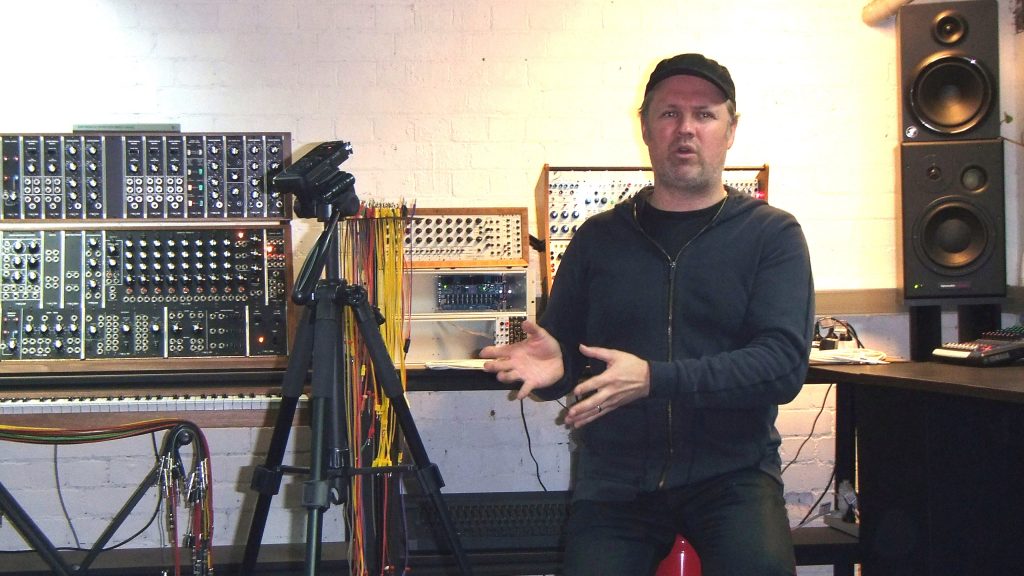
Byron explained that the core of the collection belongs to Robin, and can be traced back, through his step-father Jim Sosnin, to Jim’s colleague musician Keith Humble; one of the early driving forces of electronic music in Melbourne.
Keith brought back many early devices from the UK. Byron explained that Keith had a very close relationship with Electronic Music Studios (EMS) in the UK in their formative years.
Byron
added that his own modest collection supplemented Robin’s, and that
composer/musician Nicole Skeltys had also loaned some pieces which
she had accumulated for her EM work at a time when they could be
purchased very inexpensively. Furthermore, a fortuitous crossing of
paths with Wally de Backer (aka Goyte) at Moose Mastering saw Wally
commit to the project, both with the loan of his collection, mainly
of drum machines, metronomes and esoterica, and with financial
assistance to kick-start the process.
He also noted that
musician/composer Tony Osmond has also loaned some items from his
collection.
Despite conceding that current software implementations (such as Ableton Live) can give excellent results, Byron commented that the subjective aspect and tactility of working with these classic machines is the primary benefit of working with the original hardware.
He went on
to outline other activities of MESS, such as courses and
masterclasses where experienced practitioners can pass on their
knowledge and experiences, as well as mounting live concerts and
involvement in festivals.
He went on to describe the
“Schematic” programme they run, which covers the
technical/engineering aspects of hardware design and repair.
Byron then described some of the key instruments available, their history and special features, initially covering the Moog 65, Transaudio Procase 6, and the Transaudio Modular.
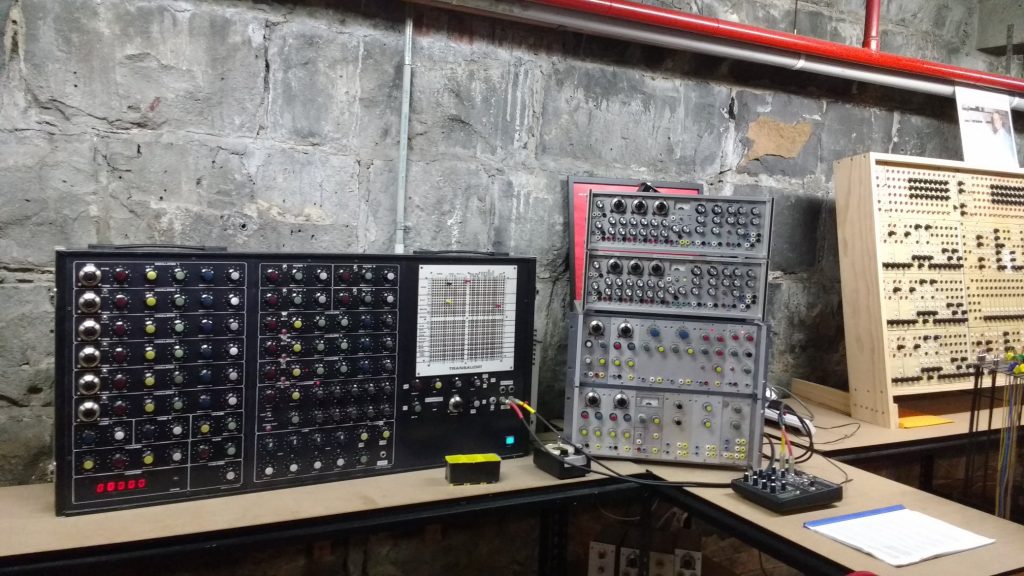
He then took us on a tour of the collection, starting with some early EMS gear and described Tristram Carey and Peter Zinovief’s initial work at the Electronic Music Studio in the UK, that morphed into EMS. He recounted Australian composer Don Banks’ pressing them to branch into manufacturing which resulted in the Don Banks Music Box. He then described the VCS1 module (which was shown here packaged in an Optronics “console”). He commented that it was Australian composers who drove EMS to manufacture and sell electronic music devices that they had developed for their own use.

He then showed us an EMS video synth the Spectron, of which few were still in existence.
Byron then moved on to their Fairlight CMI (Computer Musical Instrument), describing its genesis, the personalities involved, and the unique features the CMI brought to electronic musical instruments.
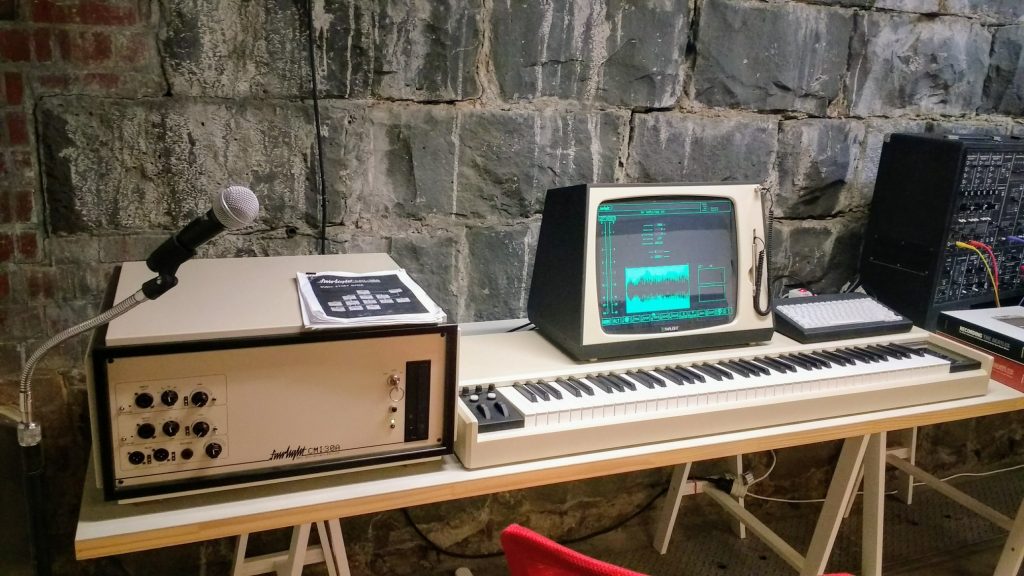
He then showed us an example of a modern Eurorack synth, describing it as the modern state-of-the-art for analog synthesisers, with a wide range of modules available from many sources coming together to create unique bespoke instruments. As well as a huge frame containing a wider range of Eurorack modules than should be possible to exist in one device, he displayed a frame from Doepfer, the pioneers of the Eurorack concept, containing a range of their modules.
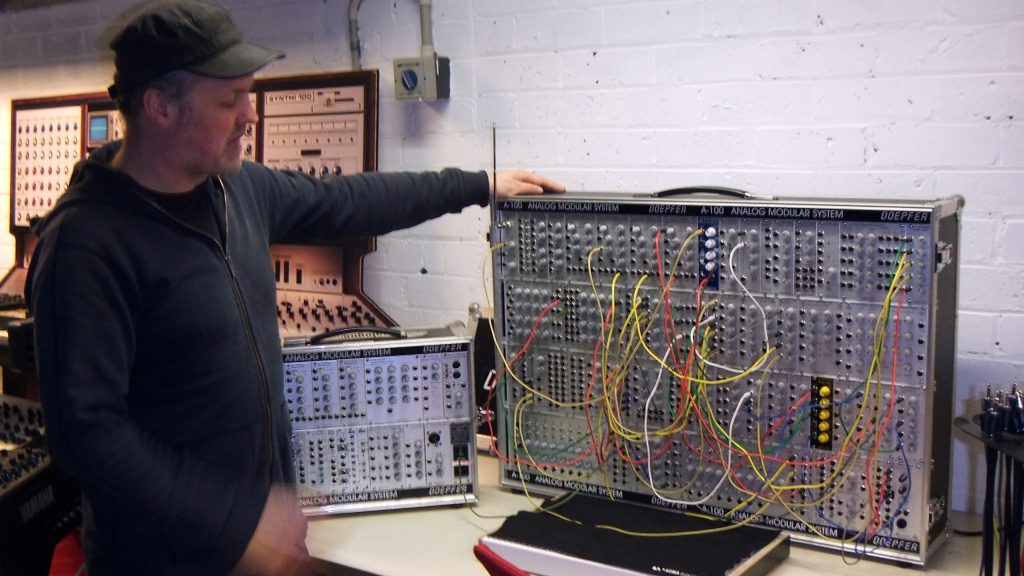
Byron then showed the studio’s Korg PS3300, which is a polyphonic synth with 128 voices! Instruments typically have no more than 8 voices!
He demonstrated the multivoice capabilities of the PS3300 by playing ever-increasingly complex series of notes to effortlessly assemble highly dense compositions in real-time.
He also showed and described the OSCar, the ARP R2600 (a 1970’s synth used for Star Wars composition and effects, among many other things), the Salt Lake City-based Steiner-Parker’s Synthacon , the Triadex Muse (a device to auto-generate music in the home), and the classic Roland TR 808 & 809 drum machines and TB-303 bass synth.
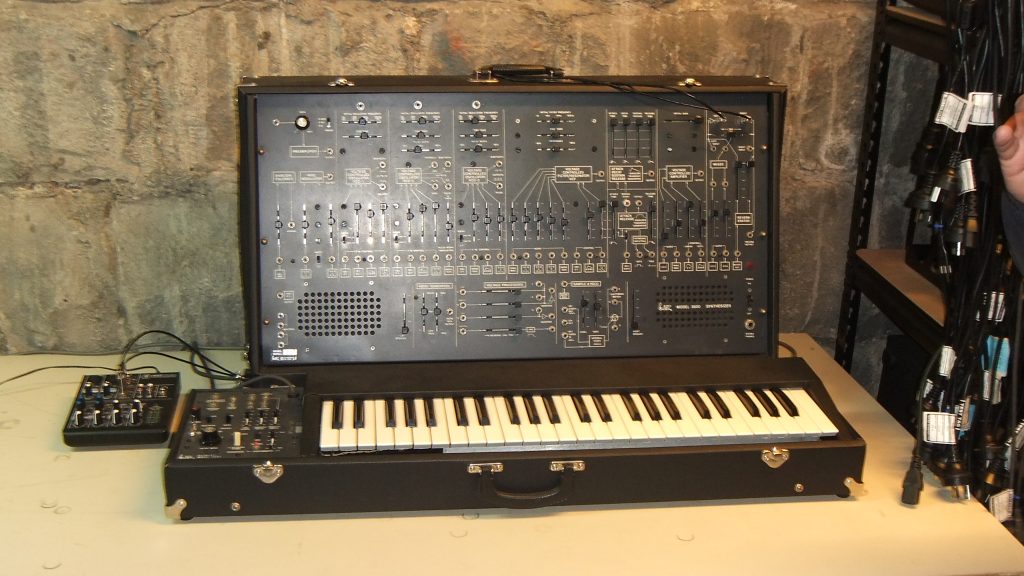
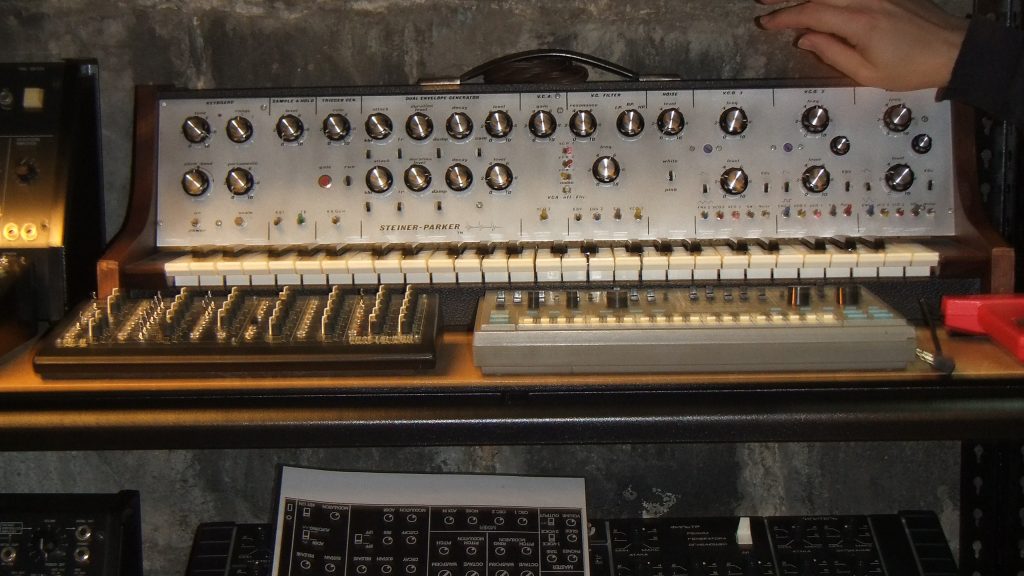
At the end of the evening he demonstrated their Ondes Martenot, a 1920’s era keyboard, and early electronic music device whose sound has some similarities to a Theremin (one of which was also on display). He demonstrated playing the instrument with its keyboard as well as with its unique ring actuator.

I for one, came away from the visit with a better understanding of the history of electronic music, and Australia’s important place in its development. The industry should be grateful that Byron and Robin Fox have created a space where new generations of music creators can have access to these classic machines, and actually use them in their compositions.
An audio recording of Byron’s talk and tour (2hr20min) can be heard or downloaded here
Other Resources:
The Melbourne Electronic Sound Studio web page, with info on MESS, and where you can join/donate is at: https://mess.foundation
Their Facebook page, showing much of their activity is at https://www.facebook.com/MESSLtd/
(no Facebook login needed to view the page)
Wikipedia has many pages devoted to classic Electronic Music devices, including most of those in the MESS collection. Some examples are:
https://en.wikipedia.org/wiki/Electronic_Music_Studios
https://en.wikipedia.org/wiki/Fairlight_CMI
https://en.wikipedia.org/wiki/Korg_PS-3300
https://en.wikipedia.org/wiki/OSC_OSCar
We thank Byron and the Melbourne Electronic Sound Studio for hosting the night, and especially Byron for a most interesting and informative presentation.

